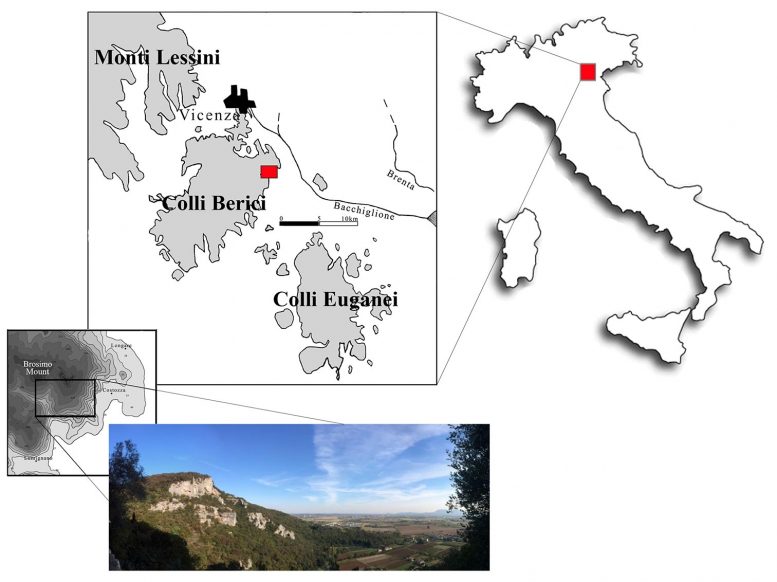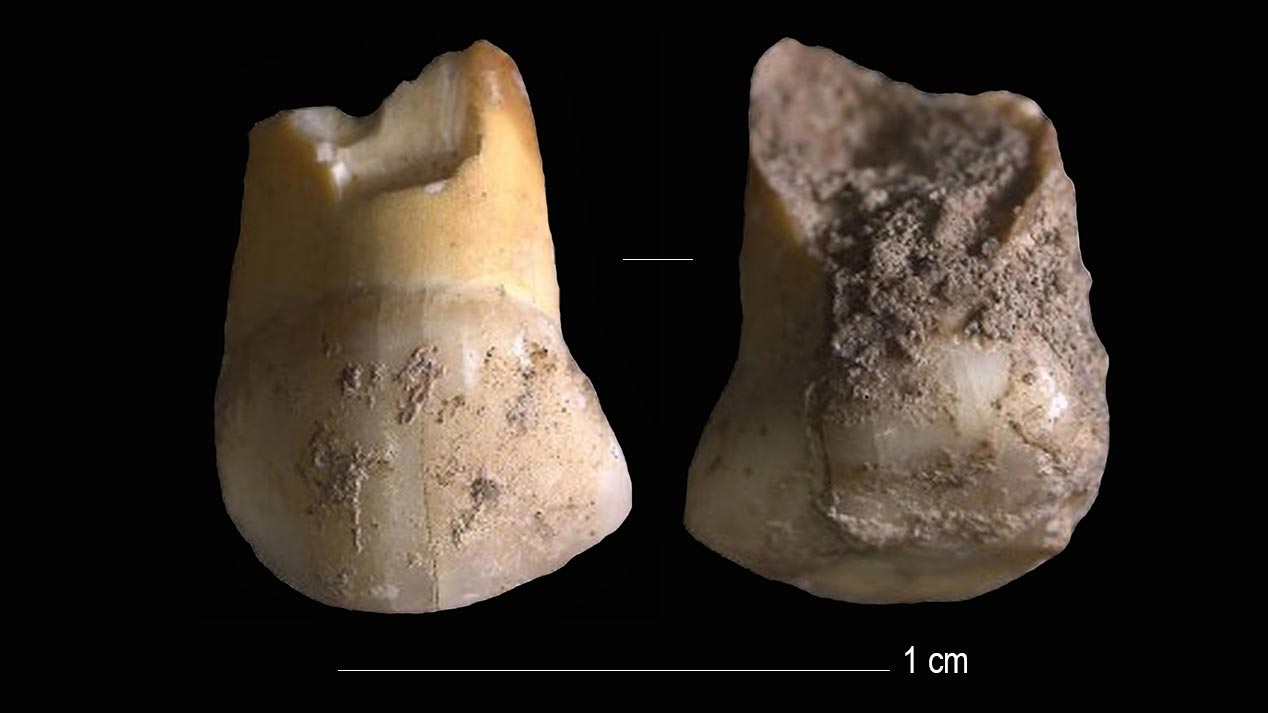A baby tooth of the upper dog that belonged to a Neanderthal man aged 11 or 12 and lived 48,000 to 45,000 years ago. Photo credit: Journal of Human Evolution
A milk tooth (i.e. milk tooth) found near “Riparo del Broion” on the Berici Hills in the Veneto region indicates one of the last Neanderthals in Italy. This little canine tooth belonged to a child between the ages of 11 and 12 who had lived in this area about 48,000 years ago. This is the most recent Neanderthal finding in northern Italy.
The study that reveals this tooth was carried out by a group of researchers from the Universities of Bologna and Ferrara who recently published an article in the Journal of Human Evolution. “This work is based on the synergy between different disciplines and specializations,” says Matteo Romandini, lead author of this study and researcher at the University of Bologna. “With the high-resolution prehistoric field archeology, we were able to find the tooth. We then used virtual approaches to analyze its shape, genome, taphonomy, and radiometric profile. After this process, we were able to determine that this tooth belongs to a child who was one of the last Neanderthals in Italy. ”
Genetic analysis shows that the owner of the tooth found on the mother’s side in Veneto was a relative of Neanderthals who lived in Belgium. This makes this location in Veneto a key area in understanding the gradual extinction of Neanderthals in Europe.

The results of the “Riparo del Broion” are still being analyzed. However, preliminary results show that this place has been used for a long period of time as there are signs of hunting activities and the slaughter of great prayers. Photo credit: Journal of Human Evolution
“This little tooth is extremely important,” says Stefano Benazzi, professor at the University of Bologna and research coordinator. “This is all the more relevant when you consider that when this child living in Veneto lost its tooth, the Homo Sapiens communities were already a thousand kilometers away in Bulgaria.”
The researchers analyzed the tooth using highly innovative virtual methods. “The techniques we used to analyze the tooth led to the following discovery: This is an upper dog milk tooth that belonged to a Neanderthal man aged 11 or 12 who lived 48,000 to 45,000 years ago,” says Gregorio Oxilia and Eugenio Bortolini, co-author of the study and researcher at the University of Bologna. “According to this dating, this small milk tooth is the most recent finding of the Neanderthal period in northern Italy and one of the newest on the entire peninsula.”
The results of the “Riparo del Broion” are still being analyzed. However, preliminary results show that this place has been used for a long period of time as there are signs of hunting activities and the slaughter of great prayers. “The production of tools, mainly made of flint, shows the great adaptability of the Neanderthals and their systematic and specialized use of the raw materials available in this area,” adds Marco Peresanti, professor at the University of Ferrara who contributed to the study.
The paper reporting the results of this study was published in the Journal of Human Evolution and its title is “A Late Neanderthal Tooth from Northeast Italy.” Matteo Romandini, Gregorio Oxilia, Eugenio Bortolini, Simona Arrighi, Federica Badino, Carla Figus, Federico Lugli, Giulia Marciani, Sara Silvestrini and Stefano Benazzi (all from the Institute for Cultural Heritage) participated in the study and proudly represented the University of Bologna.
Reference: “A late Neanderthal tooth from northeast Italy” by Matteo Romandini, Gregorio Oxilia, Eugenio Bortolini, Stéphane Peyrégne, Davide Delpiano, Alessia Nava, Daniele Panetta, Giovanni Di Domenico, Petra Martini, Simona Arrighi, Federica Badino, Carla Figus Marciani, Giulia Marciani , Sara Silvestrini, Jessica C. Menghi Sartorio, Gabriele Terlato, Jean-Jacques Hublin, Matthias Meyer, Luca Bondioli, Thomas Higham, Viviane Slon, Marco Peresani and Stefano Benazzi, September 2, 2020, Journal of Human Evolution.
DOI: 10.1016 / j.jhevol.2020.102867
This research was carried out as part of the ERC SUCCESS project, led by Stefano Benazzi, which focuses on the biocultural changes that took place in Italy during the transition between Neanderthals and Sapiens. The ultimate goal of the project is to understand when our species reached southern Europe, which processes favor the adaptation success of Sapiens and which causes lead to the extinction of the Neanderthals.
The Human Evolution and Genetics Departments of the Max Planck Institute (Germany), the Oxford Radiocarbon Accelerator Unit (UK), the DANTE laboratory at La Sapienza University and the Bioarchaeological Service of the Museum of Civilization in Rome were also involved in this project .
Research at the “Riparo del Broion” site began in 1998 and is currently under the joint scientific direction of Matteo Romandini (University of Bologna) and Matteo Peresani (University of Ferrara). This website has been made available by the Ministry of Cultural Heritage and Activities and thanks to the support of the Veneto Region, the City Council of Longare (Vicenza, Veneto), the Leakey Foundation, the CariVerona Foundation, the Italian Institute of Proto- and Prehistory and the ERC SUCCESS project.



